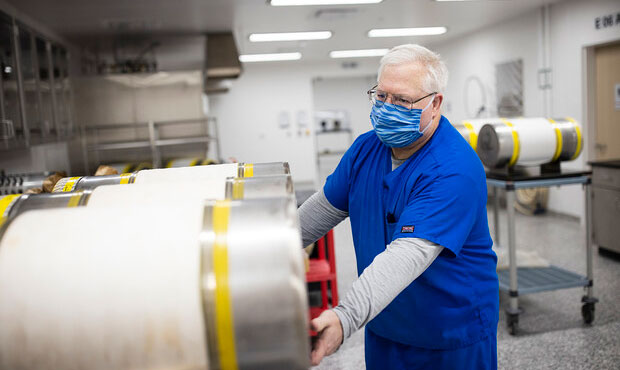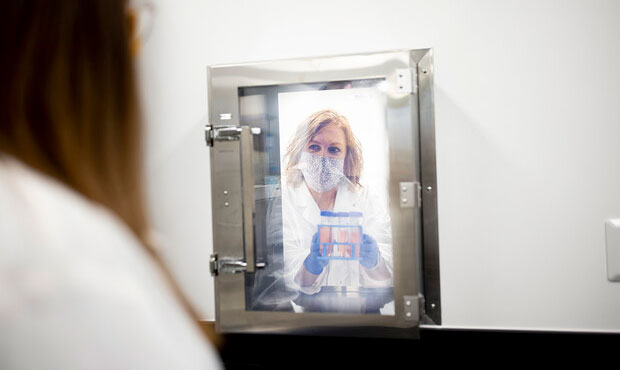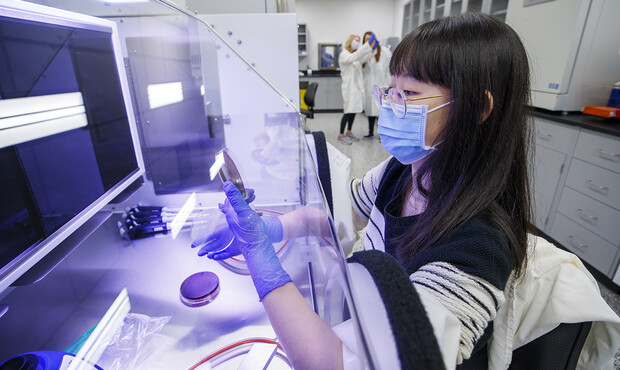10,000 square-foot facility
Only food science department in U.S. with gnotobiotic mouse program
Top 15 around the world for footprint and scale
Houses 50 isolators
Can hold up to 96 cages, isolated from each other
Can evaluate hundreds of microbiome-by-diet interactions
The Gnotobiotic Mouse Facility is a nearly 10,000-square-foot facility on UNL's East Campus which houses germ-free mice essential to understanding the workings of the gut microbiome. Learn More For additional information contact Jeff Price at jprice23@unl.edu



- The intestinal tract of an adult human can house about 100 trillion bacteria representing hundreds of species, making the gut an ultra-dense ecosystem — a microbiome. The composition and condition of the microbiome influence a person’s gastrointestinal health, immune system
- A germ-free mice facility allows researchers to isolate individual species of bacteria and study the effects of their interactions. In the Nebraska Gnotobiotic Mouse facility, mice can be raised free of any and all bacteria, transforming their GI tracts into living but sterile mini-laboratories where the absence or presence of bacterial species can be controlled, and their effects measured, at a pace and in ways that would be impractical with human subjects.
- The facility’s laboratory houses a sealed, oxygen-free chamber to culture individual bacterial species from humans or preserve an entire gut microbiome. Team members can remove those bacteria via an airlock, send them into a pass-through that connects the laboratory with a procedure room, then go gown up in a nearby locker room before entering that procedure room, where they feed the bacteria to the germ-free mice.
- The facility allows for a collaboration with the Nebraska Food for Health Center to discover, develop and translate dietary innovations for altering the gut microbiome to improve health. Leading crop lines and molecules can be evaluated in germ-free mice before moving forward for feeding to healthy humans and to narrow the findings to identify the best candidates for medical food interventions in patients.